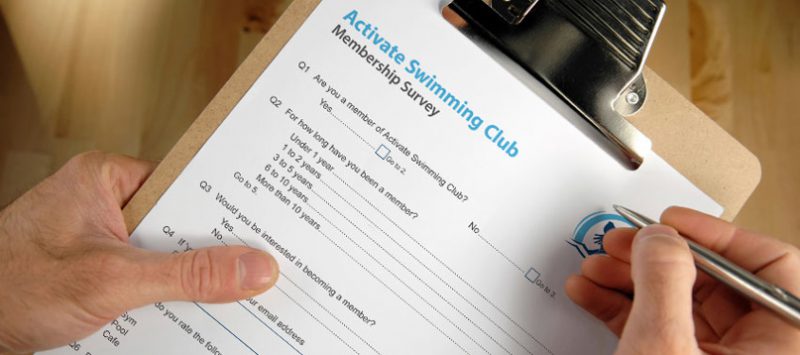
Today, customers have great power in making purchasing decisions. However, with support tools, businesses can completely find a way to “read” customers through surveys and surveys.
But really, have you prepared yourself the necessary plan to properly research the market? Do the data you collect tell the whole picture of customer behavior?
In order to help you in the right direction on market research, Malu would like to share how to do effective market research through a basic 6-step model.
Some related articles:
- The 80/20 Rule: How to Optimize Corporate Governance Efficiency
- Product Life Cycle: Product life cycle concept in Marketing
- Brand Activation – Implement Brand Activation
- Difference between Customer Satisfaction and Customer Loyalty
- 7 Principles of building a modern business strategy
- Branding strategy to “break through” from zero
- Customer Experience: Enhancing Customer Experience
Market Research – What is market research?
Market Research (or market research) is a method of collecting and analyzing information from a certain group of people, in order to understand the behavior of that group of people.
Information after research is often interpreted in the form of reports and charts, in order to help the leadership team make strategic business decisions about the researched customers.

The goal of market research is to decipher the behavior of the core customer file, helping businesses operate more efficiently. When operating efficiently, all relevant costs are omitted.
Importance of Market Research?
That’s why businesses are willing to invest billions of dong to properly research the market.
Many studies also clearly show:
80% of Instagram users are following business accounts, according to Instagram’s own 2022 survey.
75% of smartphone users use Google as the first research channel when deciding to buy a certain product, according to data from Google in 2022.
Emails that don’t show up on mobile devices can be deleted within 3 seconds, HubSpot reports 2022.
Without careful market research, you could be mercilessly kicked out of the game.
In addition, Market Research is also used by businesses to study Brand Perception and brand awareness .
Market Research Methods – Market Research
In market research, there are two main research methods, one is using the primary research method ( Primary Research ), the other is using data from the secondary research method ( Secondary Research ):
1. Primary Research
This research method uses data collected for the first time from customers.

There are different ways to collect this data source, through:
- Survey
- Focus Group (a group of sample customers, often used to collect their reactions when trying new products).
- Interview (in person, by phone)
- Directly observing behavior
Primary research is useful to businesses in:
- Research on new markets, helping you discover the behavior of customer groups that you have never had the experience of serving.
- Research and develop niche market. In this case, businesses often tear down the existing customer segment, dig deeper into their behavior.
- Discover customer portraits (Buyer Persona), learn brand awareness ( Brand Perception ) from customers, and potentially expand brand awareness ( Brand Awareness ) to the public.
2. Secondary research
Secondary research is research data you get from outside sources. These studies can be trend reports, industry reports, market charts, or even your own sales.
Often secondary research is useful for you to research your competitors, decide whether to continue investing in the market you are occupying (enter or exit), etc.

Secondary research includes:
-
- Sources from published research: This is the type of secondary data that you most often access when doing market research. It is easily searchable, even freely accessible and freely cited. This information may come from government agencies, independent research from institutions, or industry reports from specific agencies.
- Commercial Market Research Sources: Some of the metrics reports require payment to gain access and read the metrics. It usually comes from market research agencies like Nielsen, Pew or Gartner. These metrics are very important, it can have a big impact on the strategic decisions of the business, as well as with marketing and sales activities.
- Internal sources: Enterprises can completely use available data sources to support their strategic decisions. It can be monthly revenue, customer retention rate ( Customer Retention ), brand health ( Brand Health ), …
Collectively, the data from primary / secondary research has its own meaning. Depending on your business goals and strategies, you conduct surveys and research certain data.
6 steps of basic market research
To collect quality data, you can refer to the market research model through 6 basic steps as follows:
Step 1. Position the customer persona (Buyer Persona)
Before defining how customers make purchasing decisions, we must first understand who they are .

Determining information such as age , gender , occupation , income , etc. can be considered as the first step in determining the customer profile you will target to collect information in the future.
>> What is a Persona? Building Customer Portraits
Step 2. Determine the set of customer samples to collect information (Sample)
After identifying the correct buyer persona, you need to find enough samples that represent the target audience you want to target. This sample size should share the same personality, interests, and buying behavior as the audience you need to study.

Usually you can find this sample amount through methods such as:
- Customer has just purchased.
- The customer group is willing to participate in the product experience.
- Randomly search through online surveys (you have to be a little selective first, of course).
- Telephone interview according to available customer files.
Step 3. Convince customers to participate in the study
Large companies often have customer files available to take surveys, but it’s not so easy for you. But don’t worry too much. The more time you spend searching for survey candidates, the more reliable the results of the market research will be.
But tips for engaging market research participants include:
Convince people who have just bought
People who have just made a purchase are often psychologically ready to do surveys or market research. Usually you can use CRM software to find this audience. The ideal time a customer has just finished a purchase is about 6 months back.
Convince customers to make regular purchases
This sample audience doesn’t necessarily buy from your business, they may often buy from a competitor. As long as this group of customers must have regular buying actions, it’s fine.
Again, you must use customer management software, or track customer buying behavior to get the ideal research file.
Reach customer groups or interact on social networks
This is a potential research file. Find out why they often interact with your business on social networking platforms? How often do they buy products from your business? If not, what causes them to falter?

Personal relationship advocacy
You may collect information through personal relationships. Mobilize colleagues, friends, LinkedIn relationships, etc. to do research.
Even if your direct relationships don’t produce quality research results, maybe other secondary relationships (like friends of your friends) will produce quality data.
Bonuses included
Research time is also limited. Your task is to collect as much data as possible, in a certain amount of time. The fastest and most effective way here is to cleverly “nes” attractive rewards for those who complete the survey.
Step 4. Prepare survey questions in advance
To get yourself valuable survey information, you need to prepare yourself a survey questionnaire (Research Questions).
Customers do not want to spend a lot of time answering research papers. A research paper that is too short will not be of good quality, and if it is too long, it will make it easy for the respondents to give up midway.
Therefore, you should keep in mind a few tips for asking questions as follows to make the most of your golden time:
Open-ended questions should be asked
Why open-ended questions, not yes/no sentences? Because open-ended questions are like a “new” form, the respondent digs deeper into the problem you want to research. Closed-type questions will only make the survey poor quality because of the lack of information.

Divide survey content into clear structure
The structure of your survey should be clearly divided into categories, including:
- Time to introduce the content of the research paper
- The time you ask the identification questions : This is the time when you become aware of the problem that the customer is facing, the questions should be in the form of: What difficulties do you face when buying our company’s products ? Are there other more attractive alternatives on the market?
- Ask more specific questions: After identifying the problem, you need to get into the specifics of the focus of the survey. The questions should be: What sources do you usually go to to learn about products? Was the search source helpful?
- Questions about factors affecting purchase , such as: Who/what information sources influence your purchasing decision? Where do you usually shop? What are the benefits/disadvantages of that buying channel?
- Open-ended question : What do you contribute to a better purchasing process?
- And don’t forget to thank the survey participants at the end of the post.
Step 5. Make a list of competitors
This is very important for secondary research. However, the identification is sometimes not as simple as you think.
In some cases, the competition is as clear as day. Style Milo with Ovaltine, Android with iOS, Samsung with Apple. But in many other cases, your opponent is not clear. You even have more competitors than you think.
For example: A cinema not only rivals other cinemas in the area, but also includes cafes, tea rooms, drama theatres, etc. Even TV programs in the evening are also available. could be their competitors.
Basically, you can find competitors in your market through in-depth research on your target market, using social media (to investigate trends).

Or simply, search Google to find out which business’s search results appear first. This way seems like a waste of time, but you get more ideas than you think.
>>> 3 basic steps to help businesses compete and win
Step 6. Summarize the data you have collected
When reporting the results of your market research, you need to include information such as:
- Overview: Purpose, why you need to collect research information
- Participants: Shows the subjects participating in the survey. What is the number of study samples? What is the form of research? How long does the study last?
- Data Analysis: Through the data you collect, you use tools to analyze them, making them meaningful in your presentation.
- Identify the problem: Through the information analyzed, identify the problems you find in it.
- Conclusion and proposed solution: After identifying the problem, you make some conclusions and suggest to your superiors some solutions to solve the problem you have raised.

Summary
Market Research is a long-term job, requiring you to have serious and careful research. Not only how to accurately identify customer and competitor samples, businesses need to prepare for themselves a reasonable question form, how to effectively attract research subjects, and effective methods. Data analysis, useful information.




